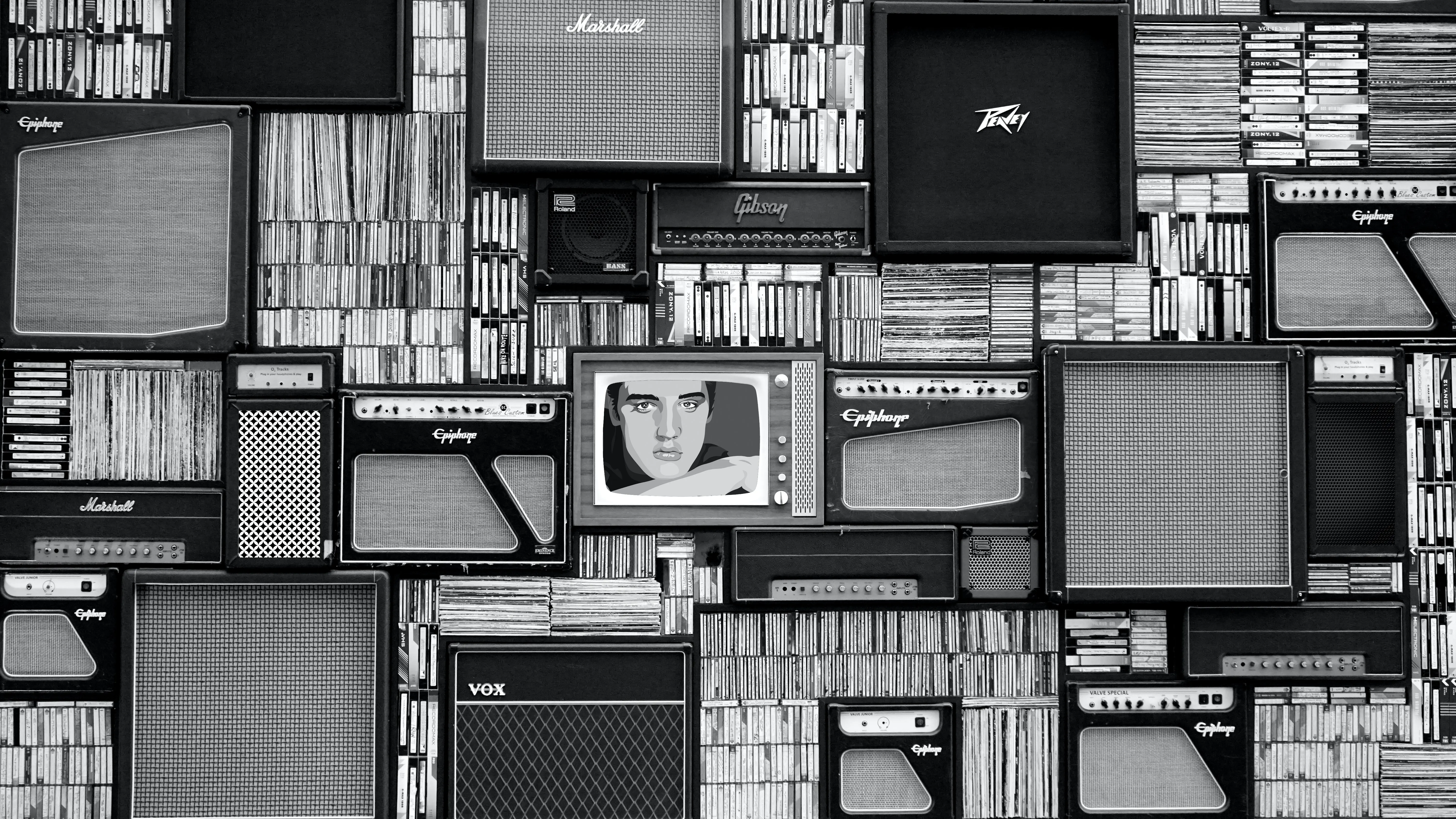Sound is one of the most integral components in film creation; it is important because it helps engage audiences and conveys the film’s message. Sound adds value to production and creates emotional responses. Sound emphasizes the actions and mood and the meaning of a film. The development of sound in the film industry has been an influential factor in production. Today sound has become a key line of production in film making; many people have developed technical skills to increase the value of film making through quality sound and integration of sound effects. Audiences watching a film would understand that the choice of soundtracks, voices, and music integrated into a film influence the way they perceive it. Pestrikov, 2019 affirms that technology is one of the most influential factors in sound development. It has altered how sound is applied and valued in the film industry. Digital technology is a key element in delivering the viewer experience in films. Initially, films were silent until the introduction of sound in 1927. This paper set out to explain the developments in sound in film.
Evolution of Sound
From the beginning of filmmaking in the world, several attempts have been made to integrate sound into visual entertainment. First, silent films; relied on subtitles texts to explain the event in a film. As Hollywood films began to gain popularity in the 1920s, sound integration in films began to trend and value-defining factor. The introduction of talkies was the first sound development experience in the film industry (Wang, 2017). In 1927, the first film with sound effects was released by the Jazz singer in American film music; the film featured a sound in a synchronized dialogue, which marked the end of silent film. In the 1930s, talkies became popular and helped in the development of Hollywood movies. Since then, many sound technologies have developed and contributed to a series of sound effects and elements for commercial purposes. Lee De Forest, an American inventor, created an enhanced sound component in the film industry referred to as optical sound in 1919 . As a result, sound has developed from mono-to stereo sound and from analog to digital sound. Lu, 2015 affirms that today, superior computer applications are used to integrate sound in film. Besides, the development of new technologies in sound recording has helped promote sound quality in filmmaking. CGI, Dolby Digital Sound, DTS, and stereo variable-area (SVA) are current technology used to record and integrate sound in filmmaking.
Major Developments
Talkies
The development of talkies is one of the greatest developments that brought about a revolutionary moment of sound in film. Major theaters began to incorporate takes in films through background dialogue and musical elements played through improvised technologies. Talkies significantly changed film production; most theaters ventured into enhanced commercialization of film productions due to talkies. According to Kornhaber, 2019, talkies transitioned film making; before then, actors could only use facile expression and body language to communicate t the audiences. Talkies promoted the social aspect of the film industry and enabled the filmmakers to communicate ad entertain audiences. Lee developed Audio 3-Electrode Amplifier Tube, which helped solve sound amplification issues in a large auditorium. He continued producing films through the DeForest Phonofilm Company, which delivered films with sounds from speeches, operas, musicals, and vaudeville acts. Warner Brothers developed a commercialized sound system called Vitaphone, which gave rise to sound film.
Synchronized Sound
the synchronized sound system is one of the major technologies that revolutionized sound in filmmaking. It marked the beginning of the successful integration of sound through optical sound, enabling the producers to print sound alongside visual effects . Synchronized sound changes the film experience; it allowed the audiences to watch while hearing spoken lines by the characters. Atencia-Linares, 2019 affirms that the technology helped influence the synchronized sound and made cinema a realistic experience. Sound technology rapidly progressed as a result of the introduction of synchronized sound. Some of these technologies include magnetic tape and optical print used to record sound films. These technologies enabled the producers to incorporate multitrack sound technology; sound and visual elements could be separated to allow for more complex sound properties such as sound effects and mixes rendering quality film production. The magnetic era focused on the shape and quality of the sound in film.
Current Technologies That Shapes Sound Development
Lee, 2020 explains that the development of the live music industry and movies has greatly pushed sound development into a technically enhanced system. Today, sound in filmmaking involves several advanced technologies set to improve the quality and effectiveness of sound effects . Likewise, introducing new sound recording, editing, and reproduction technologies in the film industry changed the quality and application of sound effects in film. Today, films feature large stereo sound systems providing greater freedom for the directors to incorporate sound to improve film quality creatively. Høier, 2017 affirms that image editing application incorporates sound tools. It accounts for about 50% of the project creation, the sound quality, and the output devices matter in the modern film industry.
Digital Sound Systems
Sound in the film industry has drastically improved through digital technologies such as Dolby Digital and DTS sound. These technologies filmmakers to produce sound formats that can be reproduced in films. Digital sound systems are shifting to software-based sound application that allows film producers to manipulate sound and add effects to increase sound quality. Computer-generated imagery (CGI) is one of the latest technologies the film industry uses to design sound effects and integrate with the visual elements. CGI could modify sound effects to determine realism, mood, and signature throughout scenes in a film. CGI is digital sound technology that is widely used in films. The computer generates sounds effects are influencing innovations in film and could make film making easy.
Stanford University scientists created computer-generated sound effects that enable filmmakers to integrate realistic sounds synchronized with visual animations automatically. It produces synchronized audio; the computer system considers visual objects’ physical movement and geometry to determine the sound output. The technology can create sounds of footsteps, thunderstorms, water flows, etc.; besides, the development of sound design frameworks has helped to address a variety of sound requirements for a film. Computer systems could specify, acquire or develop sound elements using sound production tools and technologies. Today people have developed their careers through sound production in film making, including sound designers, engineers, and analysts.
Dolby Atom Systems
It is the most trending sound technology used in filmmaking today; the invention of Dolby systems has changed the film industry. The incorporation of advanced multitrack recording in film making influenced the development of the multiplication of sound from different sources in the mix. In addition, it is the first noise suppressor developed to improve the quality of sound. Dolby Digital 5.1 sound is used in film development for theater, home, or internet applications. Bo 2017 identifies that the additional channels help improve sound quality and enable viewers to enjoy sound effects. Dolby digital sound is combined with visual effects during film editing to form one track; the audio is embedded to the film to bring realistic and real-time actions of audio-visual.
All Dimensional Surround Sound (ADSS)
Lu, 2015 notes that ADDS imitates humans’ auditory and visual perception; the main aim of this technology is to enable the reproduction of sound in real life and create a realistic experience. It is compatible with the 5.1 sound format, which is currently used in most digital sound systems, and creates a three-dimensional surround that reflects the human auditory system. Currently, ADSS is used globally with Dolby atoms and other digital systems. It is the most trading sound technology in the film industry, sound systems producing companies incorporated ASDSS.
Conclusion
At first, film producers did not recognize sound as part of artistic creation. The introduction of sound in the film industry has evolved into a career, commercial, and artistic-based production. The development of sound from silent to talkies films and analog to digital technologies has changed the way film production is conducted. Technological and scientific contributions have promoted the development of sound in filmmaking. Digital sound systems have a significant impact on sound production in the film; advanced computer technologies enable filmmakers to improve the quality of sound and simulation. Technology has changed sound development history, and shortly sound technologies could be applied widely in film production to achieve a better film experience.
References
Atencia-Linares, P. (2019). Sound in Film. In The Palgrave Handbook of the Philosophy of Film and Motion Pictures (pp. 189-214). Palgrave Macmillan, Cham. https://link.springer.com/chapter/10.1007/978-3-030-19601-1_9
Bo, Y. A. N. G. (2017). Discussion on the Application of Dolby Atmos in VR Films. Sci-tech Innovation and Productivity. https://en.cnki.com.cn/Article_en/CJFDTotal-TAIY201706034.htm
Høier, S. (2017). When Soundtracks of Fiction and Non-fiction Converge: On the use of Macro Sounds to Present the Inside of Bodies. The New Soundtrack, 7(1), 83-91. https://ntnuopen.ntnu.no/ntnu-xmlui/bitstream/handle/11250/2465420/Hoier%2Bmacro%2Baccepted%2Bmanu.pdf?sequence=1
Kornhaber, D. (2019). American Film from the Silent Era to the “Talkies.” In Oxford Research Encyclopedia of American History. https://doi.org/10.1093/acrefore/9780199329175.013.568
Lee, H., & Borzym, K. (2020, May). Creating Virtual Height Loudspeakers for Dolby Atmos and Auro-3D Using VHAP. In Audio Engineering Society Convention 148. Audio Engineering Society. https://www.aes.org/e-lib/browse.cfm?elib=20830
Lu, Y. (2015). All-dimension surround sound in the 3D film era (Doctoral dissertation, University of the Free State). https://scholar.ufs.ac.za/bitstream/handle/11660/2228/LuY.pdf?sequence=1&isAllowed=y
Pestrikov, V. M., & Yermolov, P. P. (2019). The struggle for the range of telephone communication before the invention of the audion Lee de Forest. In ITM Web of Conferences (Vol. 30, p. 16002). EDP Sciences. https://www.itm-conferences.org/articles/itmconf/pdf/2019/07/itmconf_crimico2019_16002.pdf
Wang, G. C. H. (2017). Film Rhythm After Sound: Technology, Music, and Performance by Lea Jacobs. Journal of Film and Video, 69(2), 58-59. https://www.researchgate.net/profile/George-Chun-Han-Wang/publication/316988918_Review_Film_Rhythm_After_Sound_Technology_Music_And_Performance_by_Lea_Jacobs/links/6059a4d592851cd8ce5ec0e5/Review-Film-Rhythm-After-Sound-Technology-Music-And-Performance-by-Lea-Jacobs.pdf










